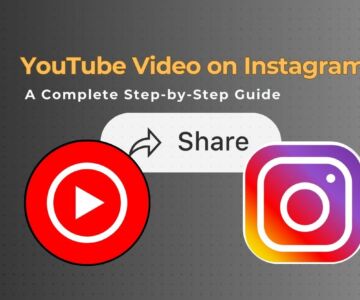 Top 5 Budget-Friendly Candle Warmers That Don’t Compromise on Qualityby admin / August 30, 2024
Top 5 Budget-Friendly Candle Warmers That Don’t Compromise on Qualityby admin / August 30, 2024Digital Art as a Hobby:Get with Trending AI Tools
Digital art has grown into a popular and accessible hobby, allowing anyone with a creative spark to explore their artistic potential. Whether you’re a beginner or an experienced artist looking to transition from traditional mediums, digital art offers endless opportunities to create stunning visuals. In this blog, we’ll guide you through getting started with digital art, focusing on trending creative tools that can help you bring your imagination to life.
1. Why Digital Art?
Digital art provides flexibility and convenience that traditional art forms may not offer. You can work from anywhere, undo mistakes with a click, and experiment with endless possibilities without needing physical materials. Moreover, digital art has applications in various fields, including illustration, animation, graphic design, and even virtual reality, making it a valuable skill in today’s tech-driven world.
2. Choosing the Right Hardware
Before diving into digital art, it’s essential to have the right hardware. Here’s what you’ll need:
- Tablet or Graphics Tablet: A tablet like the iPad Pro or a dedicated graphics tablet like the Wacom Cintiq offers precision and control, allowing you to draw directly on the screen.
- Stylus: A pressure-sensitive stylus is crucial for creating detailed artwork. Popular options include the Apple Pencil for iPads and Wacom’s Pro Pen.
- Computer: While tablets can handle most tasks, a powerful computer with a good graphics card is beneficial for more complex projects, especially when using software like Adobe Photoshop or Blender.
3. Exploring Trending Creative Tools
Now that you have your hardware ready, let’s explore some trending creative tools that will help you get started:
- Procreate: A favorite among digital artists, Procreate is an iPad-exclusive app known for its intuitive interface and powerful features. It’s perfect for beginners and professionals alike, offering a wide range of brushes, layers, and editing tools.
- Adobe Photoshop: A staple in the digital art world, Photoshop is versatile and powerful, suitable for everything from photo manipulation to digital painting. It’s available on both Mac and PC, and its extensive range of tools makes it a go-to for artists worldwide.
- Clip Studio Paint: Ideal for illustrators and comic artists, Clip Studio Paint offers tools tailored for drawing, inking, and coloring. Its vector lines and perspective rulers are particularly helpful for creating detailed artwork.
- Blender: If you’re interested in 3D art, Blender is a free and open-source software that provides everything you need to create 3D models, animations, and even games. It has a steep learning curve, but the results are worth the effort.
- Krita: A free, open-source painting program, Krita is excellent for digital painting and concept art. It offers a range of brushes and tools comparable to paid software, making it a great option for those just starting.
4. Learning the Basics
Starting with digital art can be overwhelming, but focusing on the basics will set you on the right path. Here are some tips:
- Start Simple: Begin with basic shapes and gradually move to more complex designs. Practice drawing simple objects, focusing on proportions, shading, and perspective.
- Understand Layers: Layers allow you to work on different parts of your artwork independently. Learn how to use them effectively to manage your workflow and make adjustments easily.
- Explore Brush Settings: Digital art tools offer a wide variety of brushes that can mimic traditional media like pencils, oils, and watercolors. Experiment with different brushes and settings to find what works best for your style.
- Watch Tutorials: Platforms like YouTube and Skillshare offer countless tutorials on digital art techniques. Watching other’s work can provide valuable insights and inspire your own creations.
5. Developing Your Style
As you become more comfortable with digital art, you’ll start to develop your unique style. Here are some ways to nurture your artistic voice:
- Experiment with Different Tools: Try out various brushes, textures, and effects to see what resonates with you. Don’t be afraid to mix techniques from different tools.
- Study Other Artists: Analyze the work of artists you admire. Understanding their techniques and styles can help you refine your own approach.
- Practice Regularly: Like any skill, digital art improves with practice. Set aside time each day or week to create, even if it’s just a quick sketch.
- Seek Feedback: Join online communities or social media groups where you can share your work and receive constructive feedback. Engaging with other artists will help you grow and stay motivated.
6. Showcasing Your Work
Once you’re confident in your digital art skills, consider sharing your creations with the world:
- Social Media: Platforms like Instagram, Twitter, and Behance are perfect for showcasing your art. Use hashtags and participate in art challenges to gain visibility.
- Online Portfolios: Create a portfolio website to display your best work professionally. This is particularly useful if you’re considering turning your hobby into a career.
- Print on Demand: Turn your digital art into products like posters, t-shirts, and phone cases through print-on-demand services. This can be a fun way to see your art in the physical world and even make some extra income.
Conclusion
Digital art is a rewarding hobby that offers endless creative possibilities. With the right tools and a willingness to learn, you can turn your imagination into reality. Whether you’re creating for fun or exploring a potential career, digital art is a skill worth investing in. So grab your tablet, download some software, and start creating!
FAQs
What software is best for beginners in digital art?
Procreate and Krita are excellent starting points for beginners.
Do I need a high-end tablet to start digital art?
No, many affordable tablets and even entry-level models work well for beginners.
Can I create digital art on my smartphone?
Yes, there are mobile apps like Procreate Pocket that allow you to create digital art on your smartphone.
How long does it take to learn digital art?
Learning digital art varies by individual, but consistent practice will lead to improvement over time.
Can digital art be turned into physical prints?
Yes, digital art can be printed on various materials through print-on-demand services.
What is the most important tool for digital art?
A high-quality stylus is crucial for precision and control in digital art.
Is digital art more expensive than traditional art?
Digital art can be cost-effective, with many free or affordable tools available.
Can I use digital art for professional projects?
Yes, digital art is widely used in professional fields like illustration, animation, and graphic design.
Do I need to learn traditional art skills first?
While traditional art skills can be beneficial, they are not required to start with digital art.
How can I protect my digital art files?
Regular backups and using secure cloud storage can help protect your digital art files.



